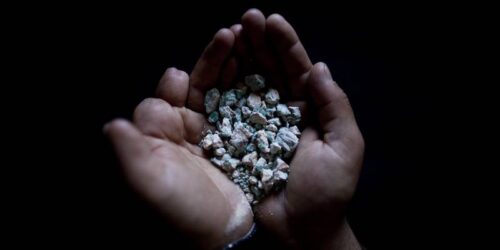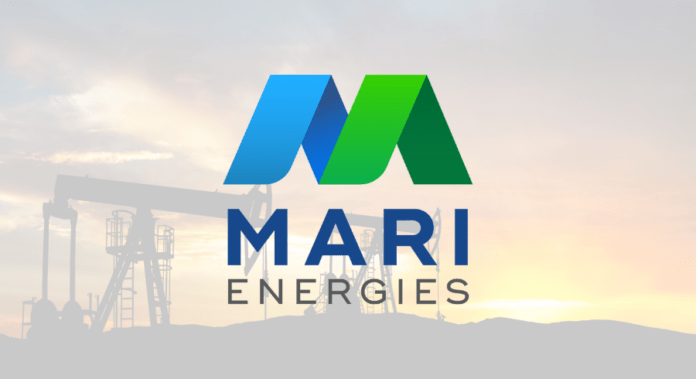This week the Taliban seized control of Afghanistan for the second time in two decades giving it access to the country’s vast mineral deposits worth trillions of dollars, which are in high demand by countries such as China and essential for the production of electric vehicles amid a global pivot to clean energy. But can this wealth transform the country and help with the global pivot to clean energy?
War-scarred Afghanistan’s valuable resources remain largely untapped, due to decades of conflict and corruption and any international ventures to extract Afghanistan’s mineral wealth are fraught with more risk and uncertainties than rewards, according to economists and industry experts.
“Afghanistan’s mines are significant, valued at over a trillion dollars and if utilised can lift many people from poverty, create jobs and forge opportunities,” Said Sabir Ibrahimi, non-resident fellow at the Centre on International Cooperation in New York University, said. “There are opportunities but the uncertainties are greater.”
Afghanistan’s mineral industry is valued at about $3 trillion and contributes seven to 10 per cent to its gross domestic product, according to the country’s Ministry of Mines and Petroleum. Plagued by decades of conflict, Afghanistan could unlock great wealth from mining materials such as lithium, gold and copper, but previous development attempts have stalled due to poor infrastructure, security risks and a lack of transparency.
“Geologically speaking, Afghanistan’s mineral wealth is quite high with a rich mix of traditional precious materials and gemstones as well as metallic minerals such as lithium and the rare earths critical to a wide array of advanced and green technologies,” said Rod Schoonover, head of the Ecological Security Programme at the Council on Strategic Risks.
Afghanistan is sitting on rich reserves of iron ore, copper, gold and rare earth metals, according to its mines ministry. Aluminium, tin, lead and zinc are located in multiple areas of the country. Gemstones, rare earth metals, sulphur, talc, gypsum and chromite are predominant across central Afghanistan, Baghlan, Kunduz, Logar and Khost, among other areas, it said.
Afghanistan stands to benefit from China’s expanding economic might in Central Asia through the Belt and Road Initiative.
The Central Asian country’s vast mineral wealth, including deposits of lithium, could prove an invaluable asset to China’s efforts to expand the supply chain for batteries used in electric vehicles.
“Unlike in the 1990s, Afghanistan’s neighbour China is now a manufacturing powerhouse with global reach,” said Michaël Tanchum, a senior fellow at the Austrian Institute for European and Security Policy and a non-resident fellow at the Middle East Institute in Washington. “That changes the equation since the Taliban’s control over Afghanistan now comes at a time when there is a supply crunch for these minerals for the foreseeable future and China needs them.
“Sky-rocketing demand for copper, lithium and cobalt, in particular, is being driven in large measure by the transition to green energy.”
Beijing dominates the lithium-ion battery supply chain, largely due to growing domestic demand, which is estimated at 72 gigawatts per hour, as well as its control over 80 per cent of global raw material refining, according to BloombergNEF. China also wields significant clout as it controls 77 per cent of the world’s cell capacity and 60 per cent of component manufacturing, data showed.
Chinese interest in procuring materials required in batteries for electric vehicles is in line with the country’s efforts to decarbonise. Beijing, the world’s biggest importer of oil, is looking to clear its polluted cities and has mandated electric vehicles to make up 40 per cent of all car sales by 2030.
Lithium and cobalt are used to make electric batteries critical to the transition to electric vehicles and the large-scale use of batteries to store power from renewable energy resources.
The lithium-ion battery market is expected to grow to $116.6 billion by 2030 from $41.1bn this year, according to Grand View Research. The market is expected to grow at a compound annual rate of 12.3 per cent over the next decade. Lithium is a sought-after mineral for the battery market, which is the main component of electric cars, sales of which are booming amid global efforts to reach net carbon neutrality by 2050.
“China already has first-mover position in Afghanistan to mine these minerals,” Mr Tanchum said.
In 2007, the Metallurgical Corporation of China (MCC) acquired a 30-year lease to mine copper at Afghanistan’s Mes Aynak for $3bn, the largest foreign investment in the country’s history. MCC’s mining operations have been plagued by political instability and the conflict between the Taliban and the former Afghan government.
“If the Taliban can provide China stable operating conditions, then the copper operations alone potentially could produce tens of billions of dollars of revenue, spurring the development of lithium and cobalt mining operations for other minerals in the country,” Mr Tanchum said.
For Beijing, the search for and access to new lithium reserves is a particularly urgent proposition. Currently, Chile, which lies several continents away from China, is the biggest source of lithium. Australia, which has fraught relations with Beijing is second.
This makes China’s search for lithium deposits in its own backyard a more economical option.
:quality(70)/cloudfront-eu-central-1.images.arcpublishing.com/thenational/FNXHXV7S6NERZEEG77XJIW37AA.png)
However, foreign investors seeking to tap into Afghanistan’s mineral riches face great risks and mounting uncertainties, analysts said.
The current regime will need to ensure security, eradicate corruption, attract international companies and gain international recognition to develop ties and be able to attract foreign direct investment, experts said.
“As far as investment in copper, cobalt or lithium goes, it will be very difficult to attract any significant investment/capex in the mining sector,” Amit Bhandari, fellow of energy and environment at Gateway House, said. “These are large investments which pay back over several years – in the current political and security climate, any corporate will be very hesitant to put down money in Afghanistan.”
In addition, the landlocked country will face logistical challenges in transporting its minerals to key markets, he said. Sea access via Iran is difficult because the country is under sanctions while Pakistan’s national railway network is not sufficiently well-developed to get bulk commodities by sea, he said.
“Fully realised mineral extraction requires more than geological abundance: Security, infrastructure, energy and water resources, and a trained workforce are all necessary as well,” Mr Schoonover said.
Australia, Chile, China, Argentina are among countries apart from Afghanistan that already produce stable supply chains for lithium, he added.
Afghanistan’s mineral resources have been untouched for about 40 years, with the previous government failing to meaningfully capitalise on this wealth in a major way, with past attempts at extraction from mines leading to no major successes.
:quality(70)/cloudfront-eu-central-1.images.arcpublishing.com/thenational/ESOM257QIBHOFOBWLFLGH33WLE.jpg)
“It will be a heavy lift for the new regime to capitalise on its mineral resources in a way that benefits the Afghan people,” Mr Schoonover said. “Beyond the lack of necessary security measures needed for extraction, the country also suffers from a great deal of illegal and unregulated mining that both enables and benefits from corruption.”
Analysts also cast doubt on the Taliban’s interest in developing the Afghan economy and establishing their legitimacy with the international community.
“The new regime may also struggle with international legitimacy which will make it harder for companies to invest in Afghanistan,” Mr Ibrahimi said. “Remember the Taliban were in control in the 1990s and they did nothing major for the economy or governance in general.”
The approach to mining must also take into consideration environmental factors.
“Viewing mining possibilities narrowly through an economic lens, with disregard to adverse impacts on people and almost certain ecological harm, is quite likely to worsen conditions for the average Afghan rather than benefit them,” Mr Schoonover said.
Afghanistan’s economy has been primarily dependent on foreign aid with domestic revenue sufficient to finance only around half of budgeted expenditures, according to the World Bank.
The country’s economy grew by an average of 9.4 per cent between 2003 and 2012, driven by a booming aid-supported services sector and farming output.Economic activity slowed to about 2.5 per cent per annum between 2015 and 2020, according to the Washington-based lender.
As a result of Covid-19, the onset of a drought, lower remittances, declining trade and growing instability in the country, the International Monetary Fund revised its growth forecast downwards in June to 2.7 per cent this year from an earlier 4 per cent estimate.
With the world’s future economy becoming increasingly electric, Afghanistan’s ability to make use of its vast resources will be crucial for its economy and for the global race for electric cars and cleaner technologies.







